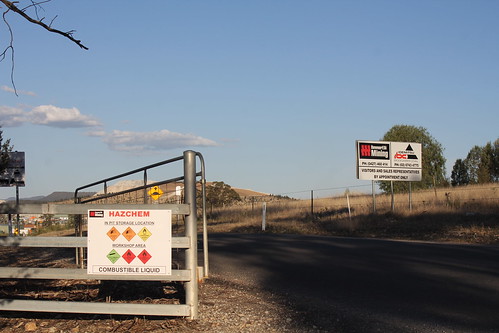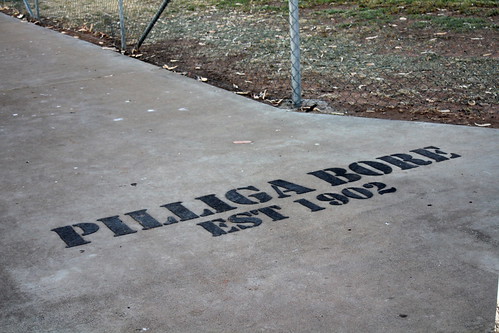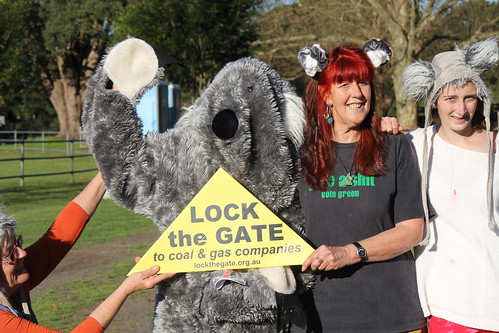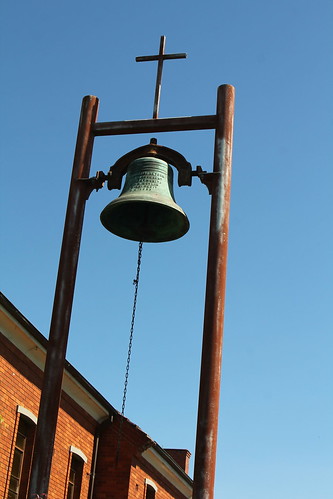Oncologists Don’t Like Baking Soda Cancer Treatment Because It’s Too Effective and Too Cheap:
Even
the most aggressive cancers which have metastasized have been reversed
with baking soda cancer treatments. Although chemotherapy is toxic to
all cells, it represents the only measure that oncologists employ in
their practice to almost all cancer patients. In fact, 9 out of 10
cancer patients agree to chemotherapy first without investigating other
less invasive options.
Doctors and pharmaceutical companies make money from it. That’s the
only reason chemotherapy is still used. Not because it’s effective,
decreases morbidity, mortality or diminishes any specific cancer rates.
In fact, it does the opposite. Chemotherapy boosts cancer growth and
long-term mortality rates and oncologists know it.
A
few years ago, University of Arizona Cancer Center member Dr. Mark
Pagel received a $2 million grant from the National Institutes of Health
to study the effectiveness of personalized baking soda cancer treatment
for breast cancer. Obviously there are people in the know who have
understood that sodium bicarbonate, that same stuff that can save a
person’s life in the emergency room in a heartbeat, is a primary cancer
treatment option of the safest and most effective kind.
Studies have shown that dietary measures to boost bicarbonate levels can
increase the pH of acidic tumors without upsetting the pH of the blood and healthy tissues.
Animal models of human breast cancer show that oral sodium bicarbonate
does indeed make tumors more alkaline and inhibit metastasis. Based on
these studies, plus the fact that baking soda is safe and well
tolerated, world renowned doctors such as Dr. Julian Whitaker have
adopted successful cancer treatment protocols as part of an overall
nutritional and immune support program for patients who are dealing with
the disease. The Whitaker protocol uses 12 g (2 rounded teaspoons) of
baking soda mixed in 2 cups water, along with a low-cal sweetener of
your choice. (It’s quite salty tasting.) Sip this mixture over the
course of an hour or two and repeat for a total of three times a day.
One man claims he has found a cure for cancer using baking soda and
molasses and actually successfully treated his own disease by using
baking soda.
When taken orally with water, especially water with high magnesium
content, and when used transdermally in medicinal baths, sodium
bicarbonate becomes a first-line medicinal for the treatment of cancer,
and also kidney disease, diabetes, influenza and even the common cold.
It is also a powerful buffer against radiation exposure, so everyone
should be up to speed on its use. Everybody’s physiology is under heavy
nuclear attack from strong radioactive winds that are circling the
northern hemisphere.
Dr. Robert J. Gillies and his colleagues have already demonstrated
that pre-treatment of mice with baking soda results in the
alkalinization of the area around tumors. The same researchers reported
that bicarbonate increases tumor pH and also inhibits spontaneous
metastases in mice with breast cancer.
What is Baking Soda?
Baking soda is a white crystalline solid that appears as fine powder.
It is also called cooking soda, bread soda and bicarbonate of soda. Its
chemical name is sodium bicarbonate or sodium hydrogen carbonate.
Baking soda is different from washing soda (sodium carbonate) although they share the same slightly salty and alkaline taste.
This widely used soda is commonly dissolved in mineral water and used
as a leavening agent in baking. It works as a leavening agent by
neutralizing the acidic components of batter. The neutralization
releases carbon dioxide and leads to the “raising” or expansion of baked
foods.
Baking soda has also been used to soften vegetable and to tenderize meat.
As a household chemical, baking soda is used as a cleaning agent. It
is included in toothpastes for similar reasons where it serves as an
antiseptic, acid-neutralizer, whitening agent and plaque-removing agent
as well as a cleaning agent.
Other common personal hygiene products in which baking soda can be found include deodorants and shampoos.
Baking Soda and pH Medicine
The pH of our tissues and body fluids is crucial and central because
it affects and mirrors the state of our health or our inner cleanliness.
The closer the pH is to 7.35-7.45, the higher our level of health and
wellbeing. Staying within this range dramatically increases our ability
to resist acute illnesses like colds and flues as well as the onset of
cancer and other diseases. Keeping our pH within a healthy range also
involves necessary lifestyle and dietary changes that will protect us
over the long term while the use of sodium bicarbonate gives us a
jump-start toward increased alkalinity.
The pH scale is like a thermometer showing increases and decreases in the acid and alkaline content of fluids. Deviations
above or below
a 7.35-7.45 pH range in the tightly controlled blood can signal
potentially serious and dangerous symptoms or states of disease. When
the body can no longer effectively neutralize and eliminate the acids,
it relocates them within the body’s extra-cellular fluids and connective
tissue cells directly compromising cellular integrity. Conversely when
the body becomes too alkaline from too much bicarbonate in the blood,
metabolic alkalosis occurs, which can lead to severe consequences if not
corrected quickly.
Jon Barron presents a way of looking at pH that opens up one of the major benefits of alkaline water:
Hydrogen ions tie up oxygen. That means that the more acid a liquid
is, the less available the oxygen in it. Every cell in our body requires
oxygen for life and to maintain optimum health. Combine that with what
we know about hydrogen ions and we see that the more acid the blood (the
lower its pH), the less oxygen is available for use by the cells.
Without going into a discussion of the chemistry involved, just
understand that it’s the same mechanism involved when acid rain “kills” a
lake. The fish literally suffocate to death because the acid in the
lake “binds up” all of the available oxygen. It’s not that the oxygen
has gone anywhere; it’s just no longer available. Conversely, if you
raise the pH of the lake (make it more alkaline), oxygen is now
available and the lake comes back to life. Incidentally, it’s worth
noting that cancer is related to an acid environment (lack of
oxygen)–the higher the pH (the more oxygen present in the cells of the
body), the harder it is for cancer to thrive.
Understanding this is important for two reasons: (1) it reveals one
of the primary benefits of alkaline water–more “available” oxygen in the
system and (2) it explains why alkaline water helps fight cancer.
How Baking Soda Can Help “Cure” Cancer
Basically, malignant tumors represent masses of rapidly growing
cells. The rapid rate of growth experienced by these cells means that
cellular metabolism also proceeds at very high rates.
Therefore, cancer cells are using a lot more carbohydrates and sugars
to generate energy in the form of ATP (adenosine triphosphate).
However, some of the compounds formed from the energy production
include lactic acid and pyruvic acid. Under normal circumstances, these
compounds are cleared and utilized as soon as they are produced. But
cancer cells are experiencing metabolism at a much faster rate.
Therefore, these organic acid accumulate in the immediate environment of
the tumor.
The high level of extracellular acidity around the tumor is one of
the chief driving force behind the metastasis of cancer tumors.
Basically, cancer cells need an acidic environment to grow and spread rapidly.
Some cancer experts, therefore, believe that by buffering the tumor
microenvironment with an alkalizing compound, the pH of tumors can be
raised enough to starve them and stop their growth and spread.
Curiously, this rather simple solution to cancer has been proven right.
What is even more remarkable is that there is no need to cook up some
fancy synthetic drug to lower the acidity in the immediate environment
of the tumor. A simple, commonly obtained compound like sodium
bicarbonate will do.
Obviously, it is desirable to deliver the sodium bicarbonate as close
to the tumor as possible since its pH-raising effect is needed in the
microenvironment of the tumor. Therefore, directly injecting sodium
bicarbonate in the tumor site is considered a better solution than oral
administration. However, oral sodium bicarbonate is just safer and can
be readily used at home.
A 2009 study published in the journal,
Cancer Research, is among the first to confirm that the alkalinizing effect of sodium bicarbonate can indeed stop cancer.
By injecting sodium bicarbonate into a group of mice, the authors of
the study were able to determine how the growth and spread of cancer
tumors were effected by raising the pH of the organ affected by the
cancer.
The study results showed that baking soda indeed raised the pH and
reduced spontaneous metastases in mice induced with breast cancer.
The researchers also determined that sodium bicarbonate works by
raising the pH outside cells and not within cells. This is an important
finding because it suggests that sodium bicarbonate does not interfere
with cellular metabolism even as it makes the microenvironment
unconducive for tumor growth.
Other findings from this study show that baking soda:
- Reduced the involvement of the lymph node on the transport of cancer cells
- Does not lower the levels of circulating tumor cells
- Reduced the involvement of the liver and, therefore, the spread of tumor cells to other organs
- Inhibit the colonization of other organs by circulating tumor cells
The Baking Soda Formula for Cancer
To make the baking soda natural cancer remedy at home, you need maple syrup, molasses or honey to go along with the baking soda.
In Dr. Sircus’ book, he documented how one patient used baking soda
and blackstrap molasses to fight the prostate cancer that had
metastasized to his bones. On the first day, the patient mixed 1
teaspoon of baking soda with 1 teaspoon of molasses in a cup of water.
He took this for another 3 days after which his saliva pH read 7.0 and his urine pH read 7.5.
Encouraged by these results, the patient took the solution 2 times on
day 5 instead of once daily. And from day 6 – 10, he took 2 teaspoons
each of baking soda and molasses twice daily.
By the 10th day, the patient’s pH had risen to 8.5 and the only side
effects experienced were headaches and night sweat (similar to cesium
therapy).
The next day, the patient had a bone scan and too other medical
tests. His results showed that his PSA (prostate-specific antigen, the
protein used to determine the severity of prostate enlargement and
prostate cancer) level was down from 22.3 at the point of diagnosis to
0.1.
Another baking soda formula recommends mixing 90 teaspoons of maple syrup with 30 teaspoons of baking soda.
To do this, the maple syrup must be heated to become less viscous.
Then the baking syrup is added and stirred for 5 minutes until it is
fully dissolved.
This preparation should provide about 10-day worth of the baking soda
remedy. 5 – 7 teaspoons per day is the recommended dose for cancer
patients.
Care should be taken when using the baking soda remedy to treat
cancer. This is because sustaining a high pH level can itself cause
metabolic alkalosis and electrolyte imbalance. These can result in edema
and also affect the heart and blood pressure.
One does not have to be a doctor to practice
pH medicine.
Every practitioner of the healing arts and every mother and father
needs to understand how to use sodium bicarbonate. Bicarbonate
deficiency is a real problem that deepens with age so it really does pay
to understand and appreciate what baking soda is all about.
Sources:
cancertutor.com
phkillscancer.com
drsircus.com
drleonardcoldwell.com
drwhitaker.com
Dave Mihalovic
is a Naturopathic Doctor who specializes in vaccine
research, cancer prevention and a natural approach to
treatment.


 CULTURAL HERITAGE IN DANGER OF DESTRUCTION
CULTURAL HERITAGE IN DANGER OF DESTRUCTION













